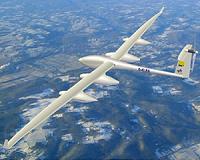 |
College Park MD (SPX) Aug 19, 2010 Wave energy is surging ahead as a viable source of renewable energy to generate electricity - with Australia's southern margin identified by the World Energy Council as one of the world's most promising sites for wave-energy generation. One problem for wave-energy developers, however, is that previous estimates of wave-energy potential are based on information in deep ocean water, while "wave-energy generation systems are typically positioned near to shore," says physical oceanographer Mark Hemer of Australia's CSIRO Wealth for Oceans National research flagship. In a paper in the AIP's Journal of Renewable and Sustainable Energy, Hemer and colleague David Griffin provide new estimates of the wave-energy potential of Australia's near-shore regions. They also calculate how much of Australia's energy needs could be obtained from wave energy alone. Australia's present-day electricity consumption is 130,000 gigawatt-hours/year. Hemer and Griffin show that if 10 percent of the near-shore wave energy available along Australia's Southern coastline could be converted into electricity, half of the country's present-day electricity consumption would be met. Australia has committed to reducing greenhouse gas emissions by 60 percent of year 2000 levels by 2050. Although an economic analysis of wave generation in Australian waters has yet to be carried out, Hemer says that wave energy offers a "massive resource" to contribute to the Australian Government's aim of producing 45,000 gigawatt-hours/year of additional renewable energy before 2020. "Convert 10 percent of available wave energy from a 1000-km stretch in this area to electricity, " Hemer says, and "the quota could be achieved by wave energy alone."
Share This Article With Planet Earth
Related Links American Institute of Physics Powering The World in the 21st Century at Energy-Daily.com
 Next Generation Of Fuel-Cell Powered Aircraft
Next Generation Of Fuel-Cell Powered AircraftCologne, Germany (SPX) Aug 19, 2010 The German Aerospace Center (Deutsches Zentrum fur Luft- und Raumfahrt; DLR) is developing the Antares H3 in cooperation with Lange Research Aircraft GmbH. The Antares H3 is a higher-performance successor of the Antares DLR-H2, the world's first piloted aircraft capable of performing a complete flight powered by fuel cells alone. The Antares H3 will set new range and endurance benchmarks. ... read more |
|
| The content herein, unless otherwise known to be public domain, are Copyright 1995-2010 - SpaceDaily. AFP and UPI Wire Stories are copyright Agence France-Presse and United Press International. ESA Portal Reports are copyright European Space Agency. All NASA sourced material is public domain. Additional copyrights may apply in whole or part to other bona fide parties. Advertising does not imply endorsement,agreement or approval of any opinions, statements or information provided by SpaceDaily on any Web page published or hosted by SpaceDaily. Privacy Statement |